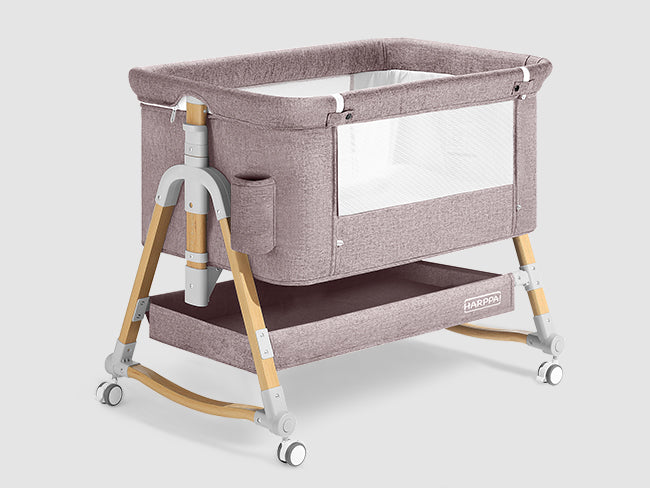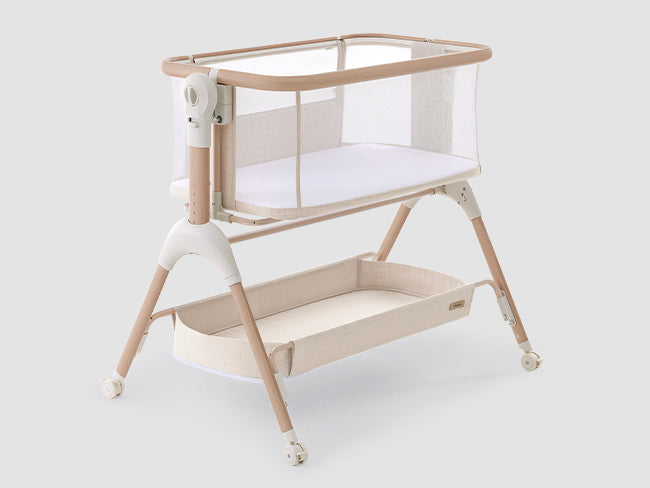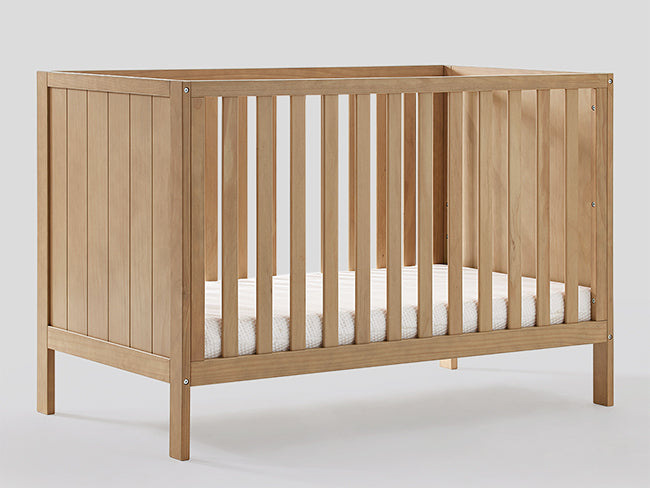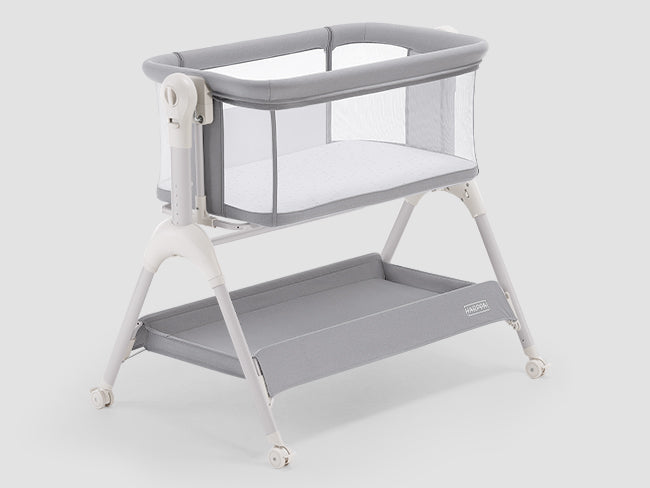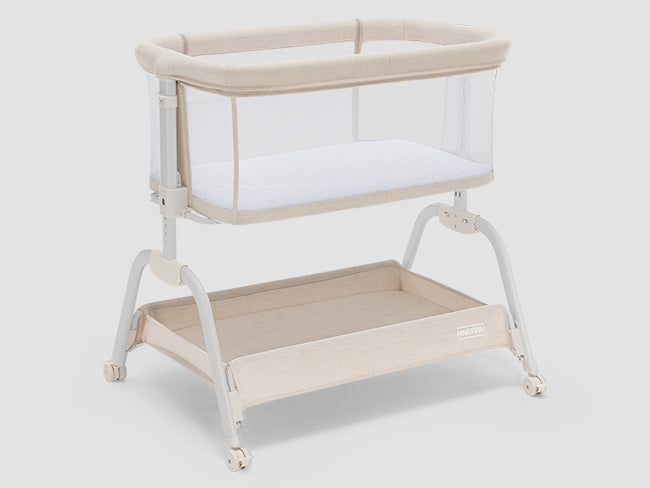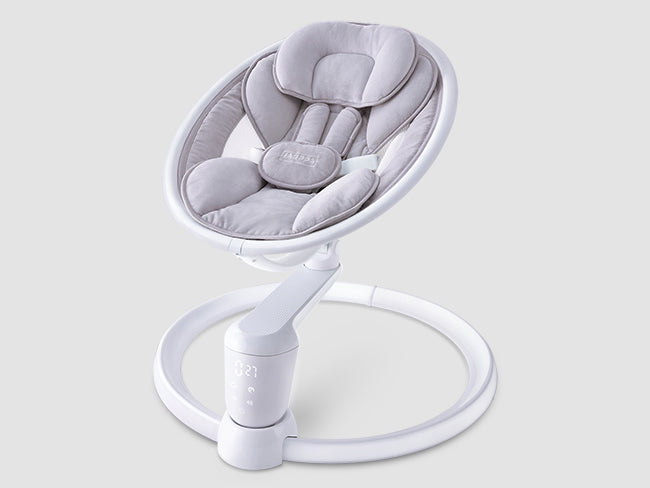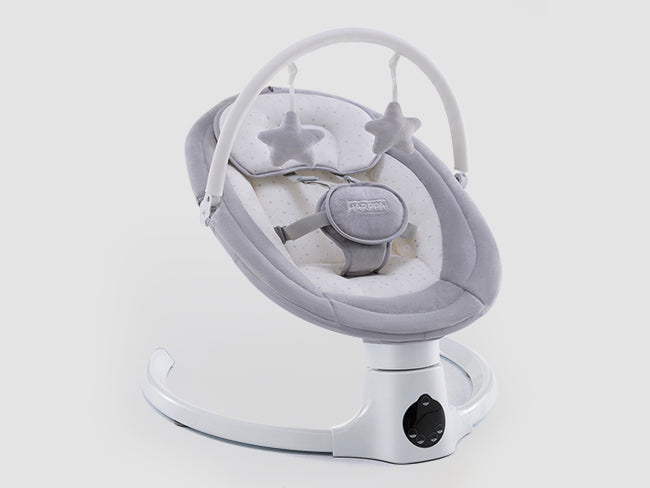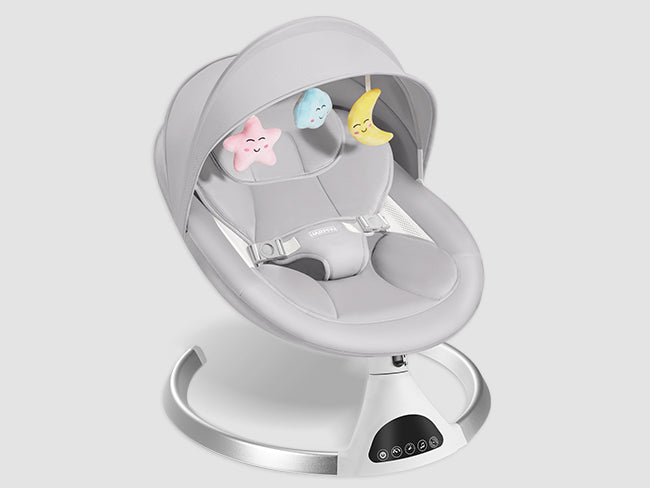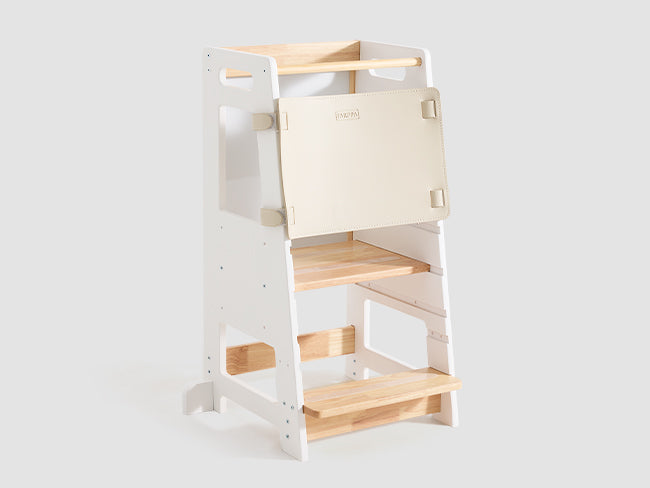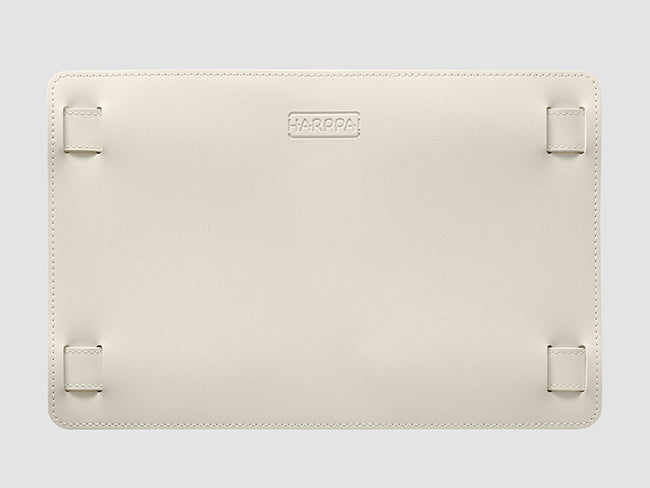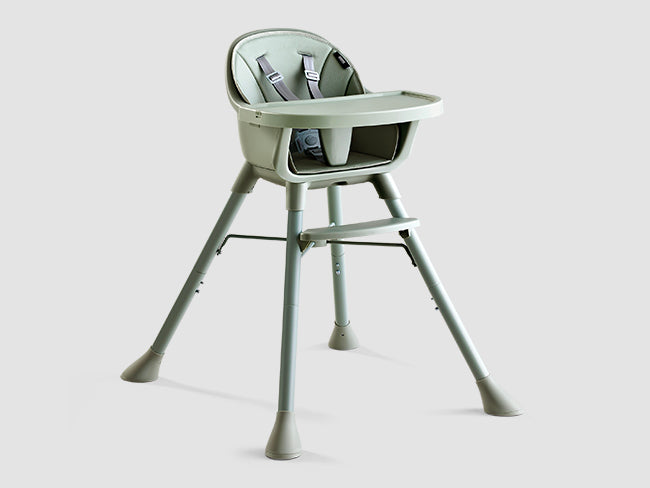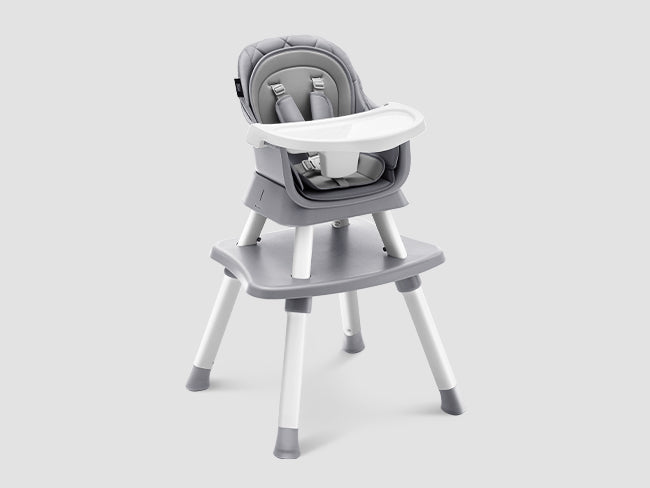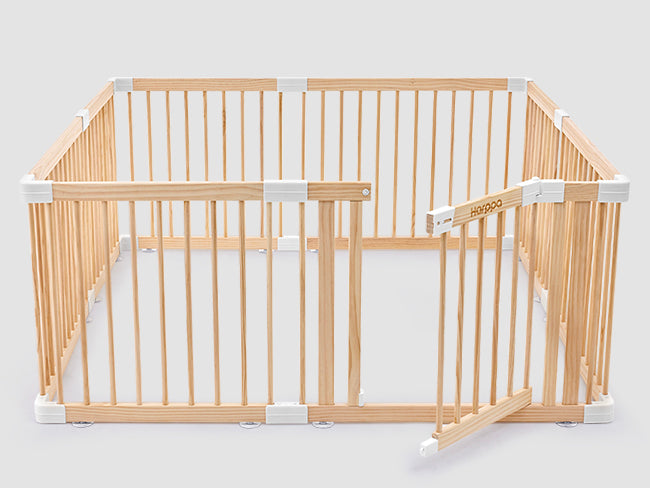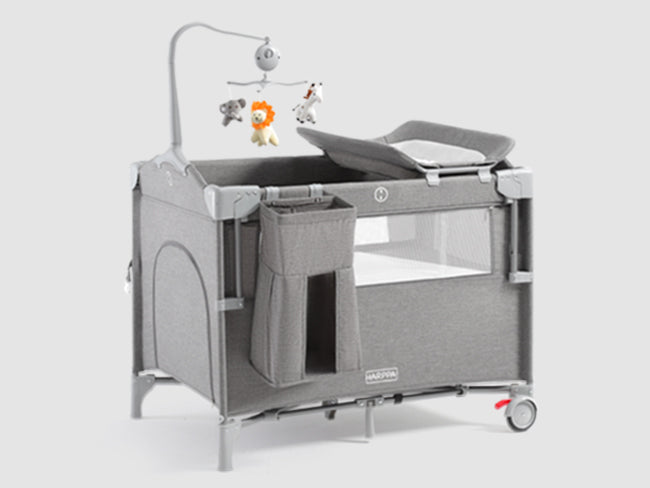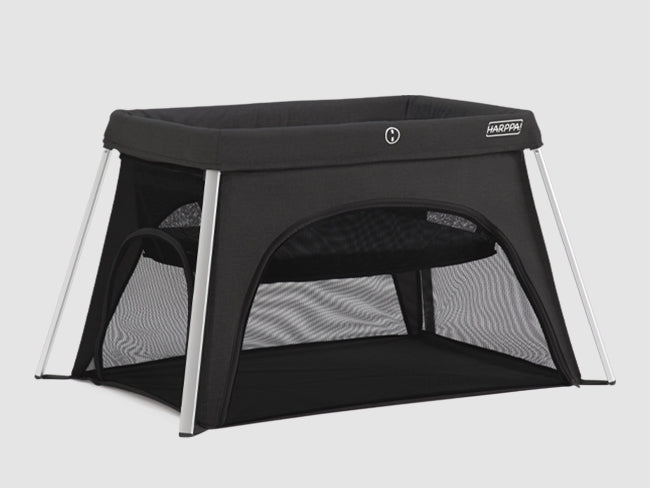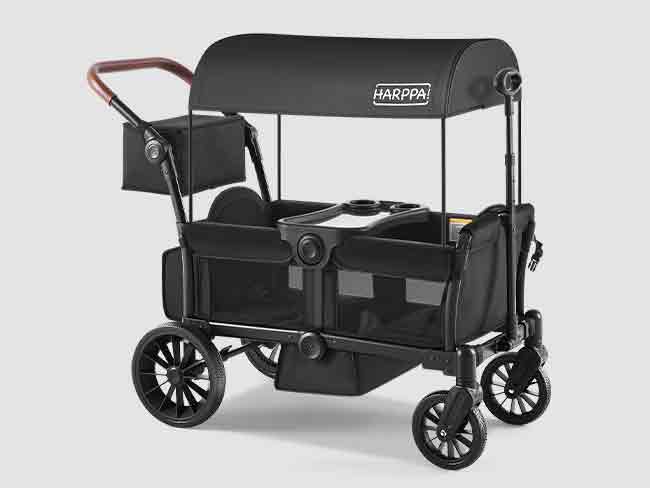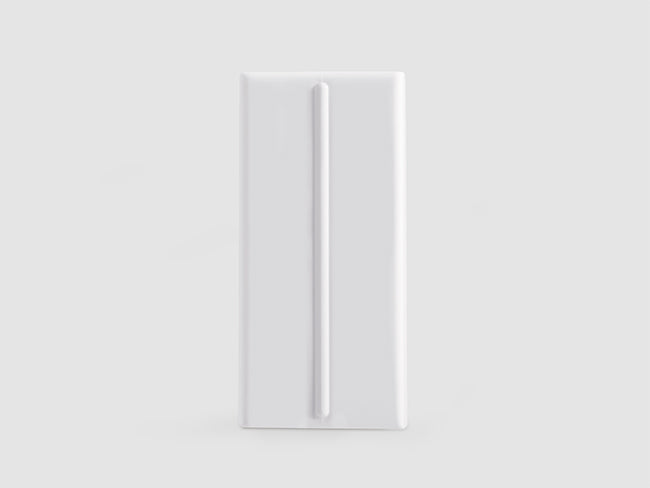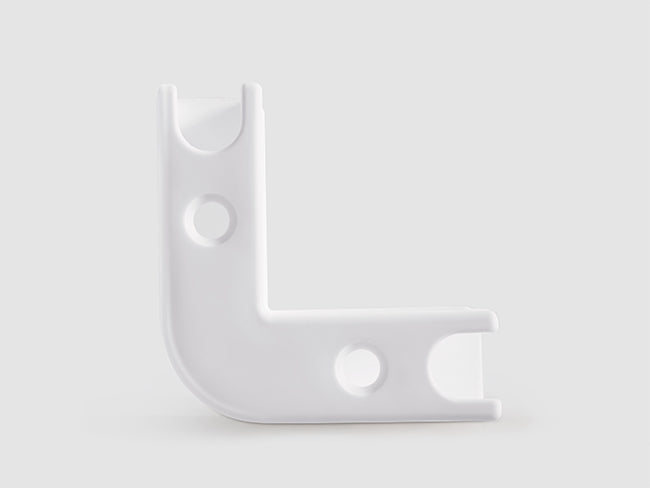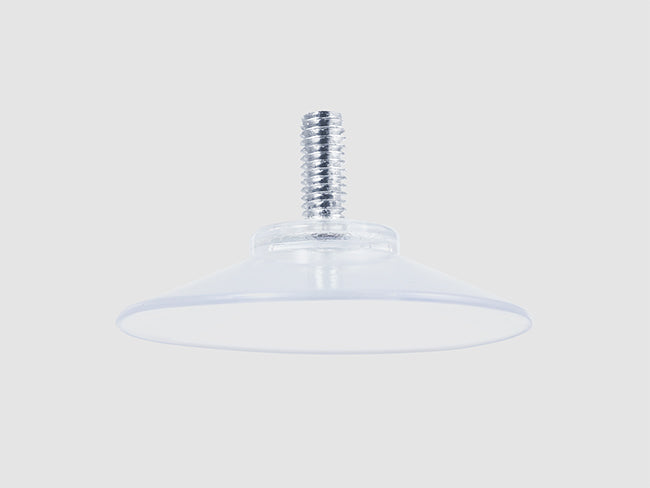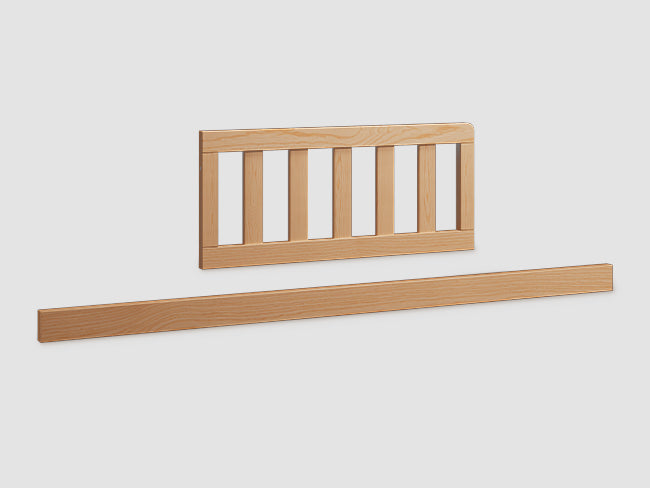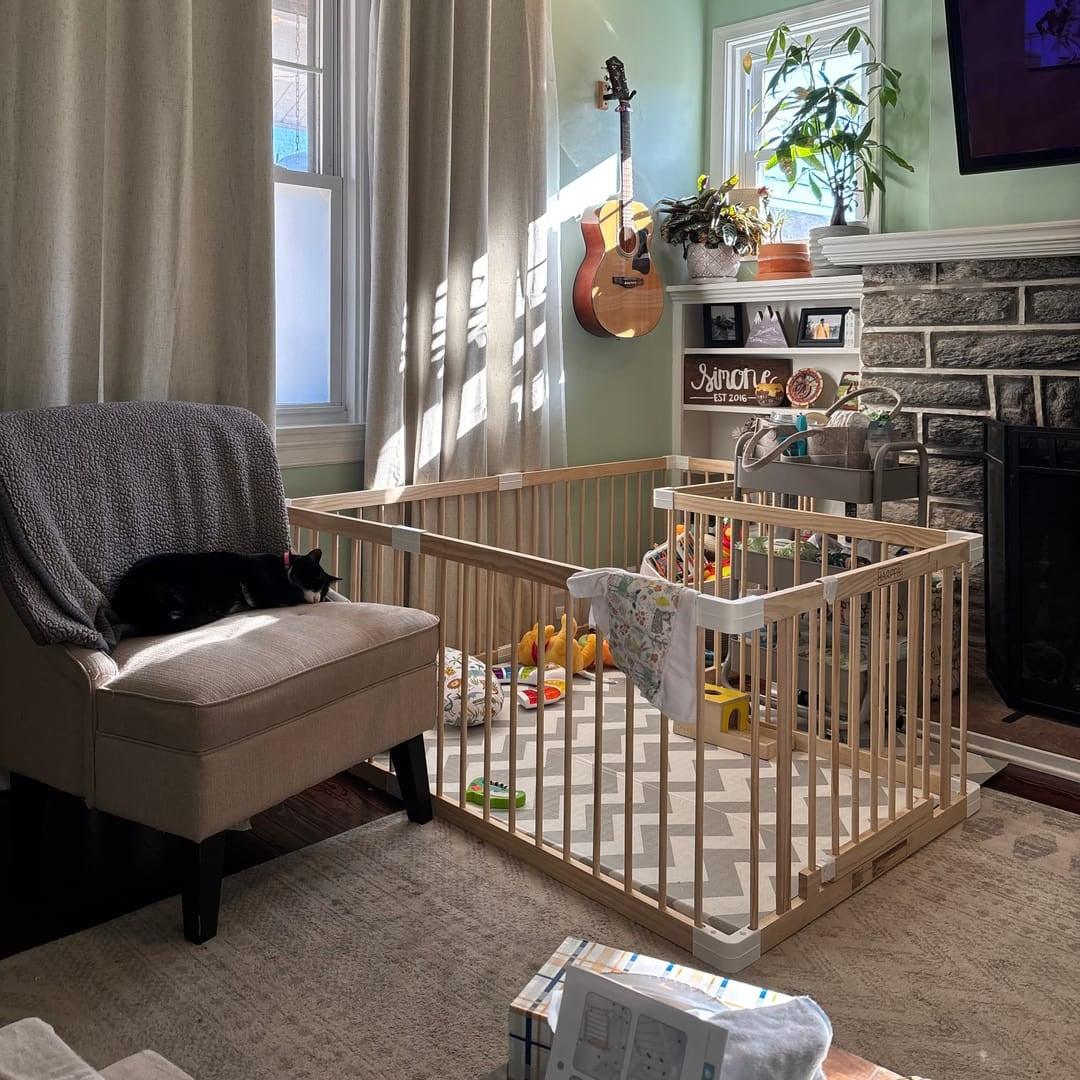1. Safety First—Always
Whether you’re a first-time parent or an experienced caregiver, safety is the top priority when choosing a playpen.
✔ Safe Materials: Safety Starts at the Source
-
Wooden Playpens: Usually made of natural wood, they offer strong support and stability. For instance, HARPPA uses New Zealand pine—naturally free of paint or coatings, so it's safe for teething babies. Smooth hand-polished surfaces reduce the risk of splinters.
-
Plastic Playpens: Lightweight and portable, but must be CPC or CPSIA certified. Avoid those made with recycled plastics or BPA.
-
Metal Playpens: Durable and suitable for long-term use, but must have safe coatings and rounded corners.
✔ Structural Design: Details Matter
-
The gap between bars should be under 6cm (as per ASTM F1004), to prevent babies from getting stuck.
-
Rounded corners on all joints help avoid bumps and bruises.
-
The base should be anti-slip to keep the playpen steady and secure.
2. Match Your Home Space
✔ Small Spaces: Compact & Versatile
-
Choose foldable or modular playpens that can be quickly stored away when not in use.
-
HARPPA’s modular wooden design allows flexible setup to fit different room layouts.
✔ Larger Spaces: Flexible Layouts
-
Fixed-style playpens with expansion panels can create stable, spacious zones.
-
HARPPA’s gate-slatted design maintains clear visibility and interaction between parent and child, without needing to lower the height too much.
3. Match Your Baby’s Age and Stage
👶 Under 6 Months
-
Focus on soft lining and secure enclosures.
-
Opt for small, enclosed shapes to give babies a sense of safety.
🚼 6 to 18 Months (Learning to Walk)
-
Choose wooden playpens with supportive bases to help babies pull up and walk.
-
Stability and anti-slip features are essential to prevent tipping over.
🧒 18 Months and Up
-
Use the playpen as a free exploration zone.
-
Add play mats, storage, or a slide to turn it into a multifunctional play area.
4. Practical Features for Everyday Use
🔧 Assembly & Storage
-
Quick-assembly or foldable designs are ideal for families that move the playpen often.
-
Look for handles or carry bags for travel convenience.
🧼 Cleaning & Maintenance
-
Easy-to-wipe surfaces and dust-resistant corners save effort.
-
Ensure wooden surfaces are water-resistant and plastic doesn’t degrade quickly.
🚪 Gate Lock & Mechanism
-
The lock design must comply with U.S. safety standards and cannot be operated with one hand—this prevents babies from opening it by accident.
-
Finger-pinch protection at the gate is also essential for both adults and kids.
5. Long-Term Value: From Playpen to Play Area
🔄 A Space That Grows With Your Child
-
Modular wooden playpens can be reconfigured into reading corners, block areas, or creative zones.
-
Use parts of the playpen as your child grows to build a lasting learning and play space.
✨Conclusion
“The best playpen helps a child explore the world, not limit them.” — Child Development Expert
A playpen shouldn't merely restrict—it should protect while supporting growth and discovery. Choose based on your child's stage, behavior, and your home’s layout. A truly safe and practical playpen gives children the freedom to explore, and parents a little peace of mind.

